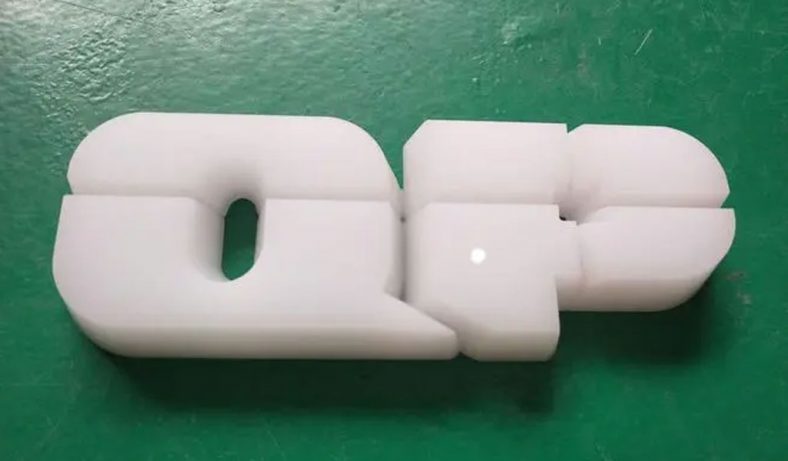
Plastics have revolutionized modern industries due to their versatile properties and wide range of applications. However, in certain demanding environments where high temperatures are prevalent, ordinary plastics may not suffice. This is where heat-resistant plastics come into play. Heat-resistant plastics are a specialized category of engineering materials that can maintain their structural integrity and mechanical properties even under extreme heat conditions.
In this comprehensive article, we will explore the top 8 heat-resistant plastics, delve into the physics and chemistry behind their remarkable heat resistance, and present a detailed property table chart for comparison.
Polyether Ether Ketone (PEEK)
Polyether Ether Ketone, commonly known as PEEK, is one of the most well-known heat-resistant plastics. PEEK is a semi-crystalline thermoplastic with exceptional thermal stability. Its heat resistance stems from its unique molecular structure. The key components of PEEK are aromatic rings and ether and ketone groups, which contribute to its high heat tolerance. These chemical groups form strong covalent bonds that are resistant to thermal degradation.
PEEK’s crystalline regions provide additional strength and heat resistance, while the amorphous regions contribute to its toughness and flexibility. This combination of crystallinity and amorphousness allows PEEK to withstand continuous temperatures of up to 260°C (500°F) while retaining excellent mechanical properties, peek cnc machining suitable for aerospace, automotive, and medical applications.
Polyimide (PI)
Polyimide, or PI, is another high-temperature-resistant plastic with exceptional thermal stability. Its unique heat resistance is attributed to its imide functional groups, which are highly stable and contribute to the polymer’s remarkable chemical and thermal resistance. PI’s backbone consists of alternating imide and aromatic rings, leading to strong covalent bonds that maintain structural integrity even at elevated temperatures.
PI’s amorphous nature allows it to withstand continuous operating temperatures of up to 300°C (572°F), making it an ideal choice for aerospace, electronics, and automotive industries, where high heat and demanding conditions are prevalent.
Polytetrafluoroethylene (PTFE)
Polytetrafluoroethylene, commonly known as PTFE or Teflon®, is a fluoropolymer renowned for its non-stick properties and exceptional heat resistance. The unique heat resistance of PTFE can be attributed to its molecular structure, which consists of a long chain of carbon atoms with fluorine atoms surrounding them. This fluorine-carbon bond is exceptionally strong, making PTFE highly resistant to thermal degradation and chemical attack.
PTFE’s melting point is around 327°C (621°F), and it can withstand continuous temperatures of up to 260°C (500°F) without significant degradation. Additionally, PTFE’s low coefficient of friction and excellent dielectric properties make it a preferred choice in various applications,teflon machining range including cookware, gaskets, seals, and electrical insulators.
Polyetherimide (PEI)
Polyetherimide, also known as PEI or Ultem®, is an amorphous thermoplastic known for its heat resistance and mechanical strength. PEI’s excellent heat resistance can be attributed to its unique chemical structure, which contains ether and imide groups. These functional groups form strong covalent bonds, ensuring the material remains stable even at elevated temperatures.
PEI can withstand continuous operating temperatures of up to 180°C (356°F) while maintaining its mechanical properties, including tensile strength and impact resistance. Its combination of heat resistance and dimensional stability makes it an excellent choice for electronics, automotive, and aerospace applications.
Polyphenylene Sulfide (PPS)
Polyphenylene Sulfide, known as PPS, is a semi-crystalline thermoplastic that exhibits exceptional heat resistance. PPS’s excellent heat resistance is primarily due to the strong aromatic rings in its molecular structure. These aromatic rings form tight, stable bonds, making PPS highly resistant to thermal degradation.
PPS can withstand continuous temperatures of up to 240°C (464°F) while retaining its mechanical properties, including tensile strength and dimensional stability. Its chemical resistance and flame-retardant properties also make it a popular choice in automotive, electrical, and industrial applications.
Liquid Crystal Polymer (LCP)
Liquid Crystal Polymer, or LCP, is an engineering thermoplastic known for its exceptional heat resistance and dimensional stability. LCP’s unique heat resistance is attributed to its long, rod-like molecular structure, which forms liquid crystalline phases. This highly ordered arrangement results in strong intermolecular forces and excellent thermal stability.
LCP can withstand continuous temperatures of up to 260°C (500°F) while maintaining its mechanical properties. Its low coefficient of thermal expansion and high tensile strength make it an excellent choice for high-precision components in electronics, automotive, and aerospace applications.
Polyamide-imide (PAI)
Polyamide-imide, also known as PAI, is an amorphous thermoplastic known for its exceptional heat resistance and mechanical strength. PAI’s heat resistance can be attributed to its imide functional groups, which form strong covalent bonds, ensuring stability at elevated temperatures.
PAI can withstand continuous temperatures of up to 260°C (500°F) without significant loss of mechanical properties, including tensile strength and creep resistance. Its excellent chemical resistance and wear resistance make it a popular choice in aerospace, electronics, and industrial applications.
Polyether Sulfone (PES)
Polyether Sulfone, known as PES, is a transparent amorphous thermoplastic with excellent heat resistance and dimensional stability. PES’s heat resistance is attributed to its ether and sulfone functional groups, which form strong covalent bonds, ensuring stability even at elevated temperatures.
PES can withstand continuous temperatures of up to 200°C (392°F) while maintaining its mechanical properties. Its transparency, high strength, and resistance to hydrolysis and chemicals make it suitable for optical and medical applications, as well as aerospace and automotive components.
The Physics and Chemistry Property Chart Of Heat-Resistant Plastics
The following property table chart provides a detailed comparison of the physics and chemistry properties of the top 8 heat-resistant plastics:
| Plastic | Continuous Operating Temperature (°C) | Melting Point (°C) | Specific Heat (J/g°C) | Thermal Conductivity (W/m°C) |
|---|---|---|---|---|
| PEEK | 260 | 341 | 1.3 | 0.25 |
| PI | 300 | 390 | 1.2 | 0.1 |
| PTFE | 260 | 327 | 1.0 | 0.25 |
| PEI | 180 | 217 | 1.27 | 0.24 |
| PPS | 240 | 280 | 1.67 | 0.29 |
| LCP | 260 | 330 | 1.35 | 0.28 |
| PAI | 260 | 285 | 1.2 | 0.24 |
| PES | 200 | 225 | 1.3 | 0.26 |
| Plastic | Coefficient of Thermal Expansion (µm/m°C) | Flammability Rating | Chemical Resistance | Electrical Insulation |
|---|---|---|---|---|
| PEEK | 50 | UL 94 V-0 | Excellent | Excellent |
| PI | 40 | UL 94 V-0 | Excellent | Excellent |
| PTFE | 100 | UL 94 V-0 | Excellent | Excellent |
| PEI | 50 | UL 94 V-0 | Good | Very Good |
| PPS | 60 | UL 94 V-0 | Excellent | Very Good |
| LCP | 50 | UL 94 V-0 | Excellent | Excellent |
| PAI | 50 | UL 94 V-0 | Excellent | Good |
| PES | 80 | UL 94 V-0 | Very Good | Very Good |
Heat-resistant plastics play a crucial role in various industries where elevated temperatures and demanding conditions are prevalent. Understanding the physics and chemistry behind the exceptional heat resistance of the top 8 heat-resistant plastics – PEEK, PI, PTFE, PEI, PPS, LCP, PAI, and PES – provides valuable insights into their suitability for specific applications.
Precision Custom Plastic Parts – Start Your Next Project With Be-Cu
These heat-resistant plastics are at the forefront of innovation, enabling advancements in aerospace, automotive, electronics, and medical sectors, among others. As we continue to explore the boundaries of material science, we can anticipate even more impressive developments in the realm of heat-resistant plastics, pushing the limits of high-temperature applications and driving progress across various industries.
If you want to learn more about which high-temperature plastic is ideal for your specific application, we’re here to help! Be-Cu is your operating system for custom manufacturing that can help with all your injection molding material selection, part manufacturing and finishing needs. We’re experts at producing custom mechanical parts in a variety of materials, and we simplify custom part sourcing with intelligent, streamlined, automated workflows.View Our Custom Plastic Parts Case Studies as following:
-

CNC Machining Bakelite Circuit Board Test Fixture
-

CNC Machining Anti-static Translucent PC Optical Parts
-
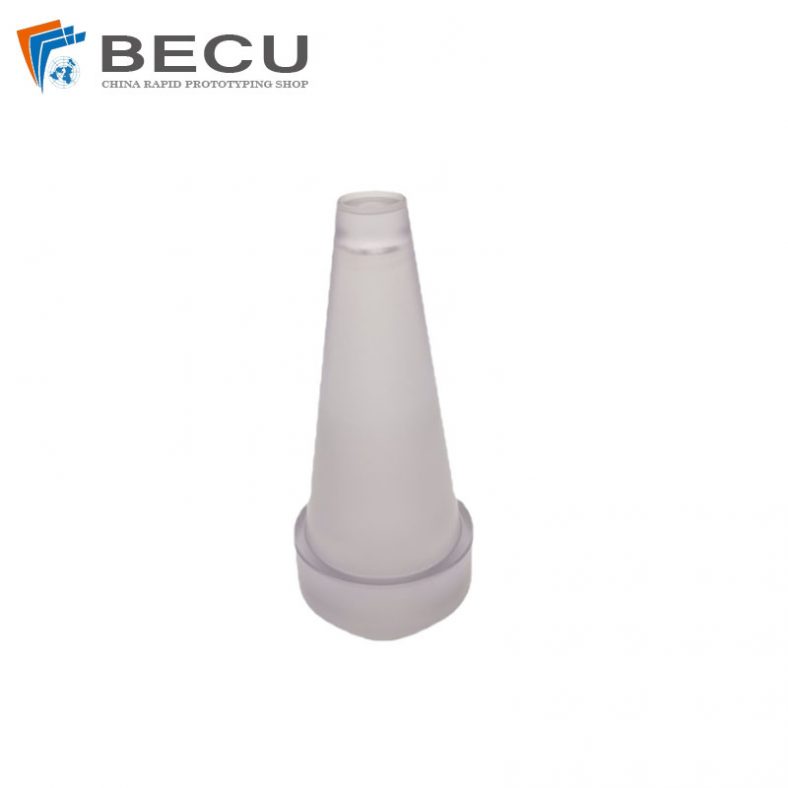
Precision Turning 20° Acrylic Downlight Reflector
-
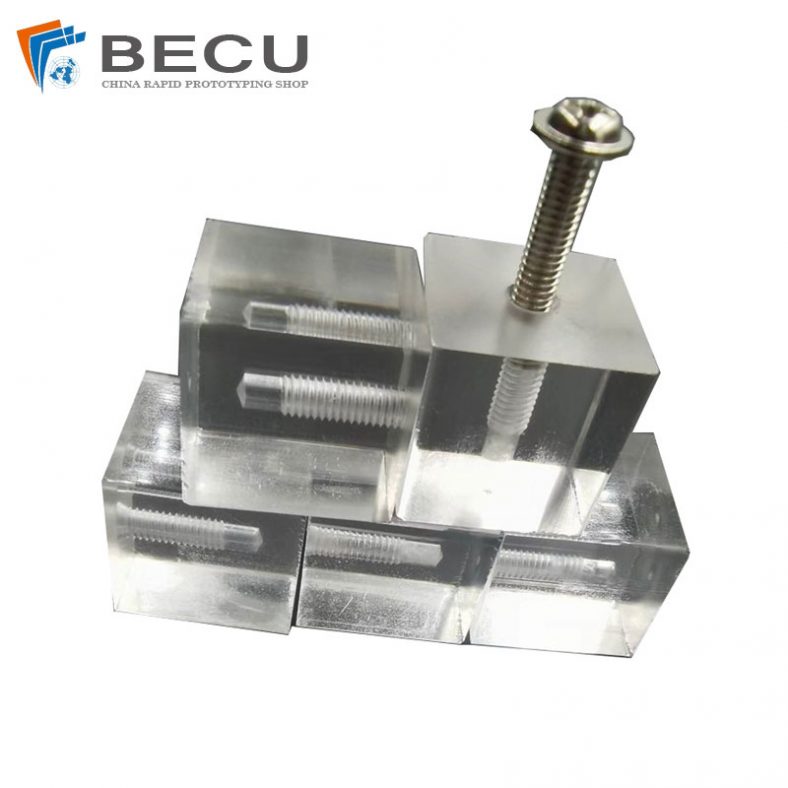
Transparent Acrylic Faceted Cube Threaded Clamp
-

CNC Turning Transparent PMMA Wear-Resistant Mechanical Parts
-
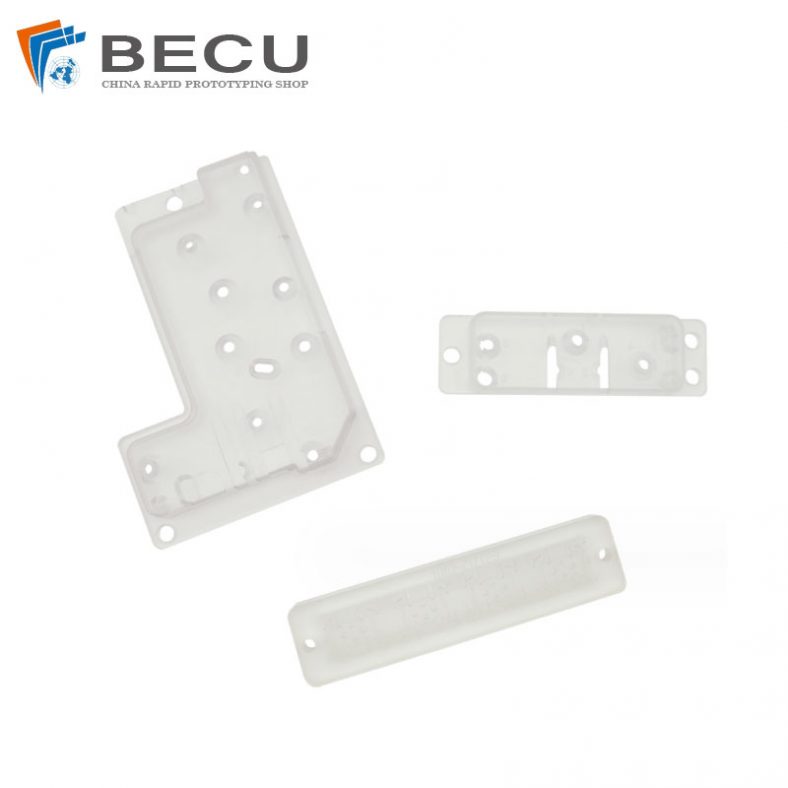
4 Axis Machining Highly Transparent Acrylic LED Tunnel Light Lens
-
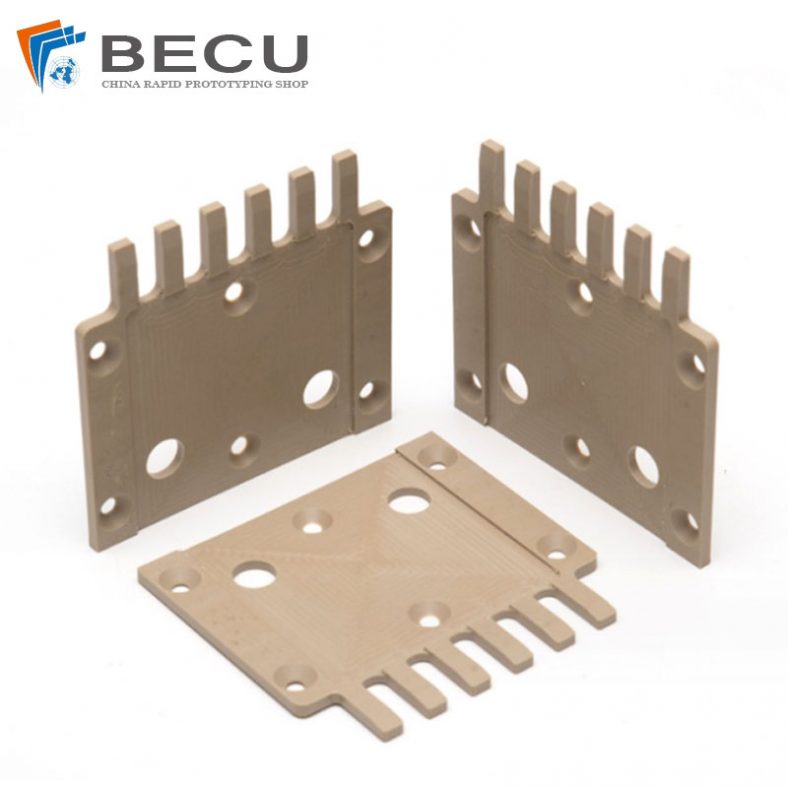
Precision Engraving Special-Shaped Natural Color PEEK Parts
-
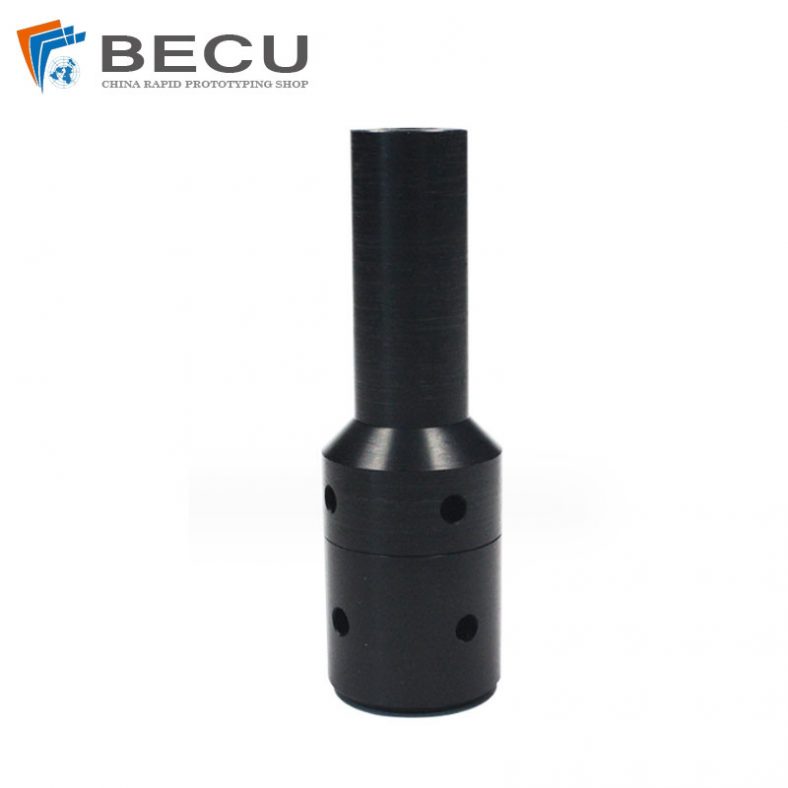
CNC Turning Wear-Resistant HDPE Fasteners
